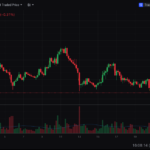This week, Bitcoin whales have sold substantial amounts of cryptocurrency, triggering concerns about the asset’s ability to maintain its critical $100,000 level. The sudden surge in selling coincided with BTC’s return to the six-figure range, leaving many wondering whether the cryptocurrency can achieve a new all-time high before year-end.
Whales Are Cashing Out
Data from IntoTheBlock reveals a significant shift in net flows of large Bitcoin holders. This metric, which tracks net buying or selling activity of wallets holding more than 1% of Bitcoin’s circulating supply, has seen a sharp decline. A week ago, when Bitcoin traded near $97,885, the net inflow stood at 28,570 BTC.
In contrast, over the past few days, this figure dropped to -3,960 BTC. This suggests that whales have offloaded Bitcoin worth approximately $400 million, sparking speculation about the reasons behind this sell-off and its potential impact on the broader market.
Can Bitcoin Hold $100,000?
The $100,000 price level is seen as a key psychological barrier for Bitcoin. While the milestone initially signaled bullish momentum, the sudden selling pressure from large holders has raised doubts about Bitcoin’s short-term trajectory. If whale selling continues, BTC may struggle to maintain its current level, let alone achieve new highs in the coming months.
Market Implications for Investors
For investors, whale activity serves as both a warning and an opportunity. A decline in whale holdings could pave the way for retail investors to enter the market at lower price points. On the other hand, continued sell-offs may erode confidence, potentially leading to a broader market correction. Traders should closely monitor whale activity and overall market sentiment to make informed decisions.
Conclusion
While Bitcoin remains a leading digital asset with long-term potential, its short-term performance could be influenced by continued whale selling. Investors should remain cautious and assess both macroeconomic trends and on-chain metrics before making decisions.
Disclaimer: This article is for informational purposes only and does not constitute investment advice. Always consult a financial advisor before making any investment decisions.







